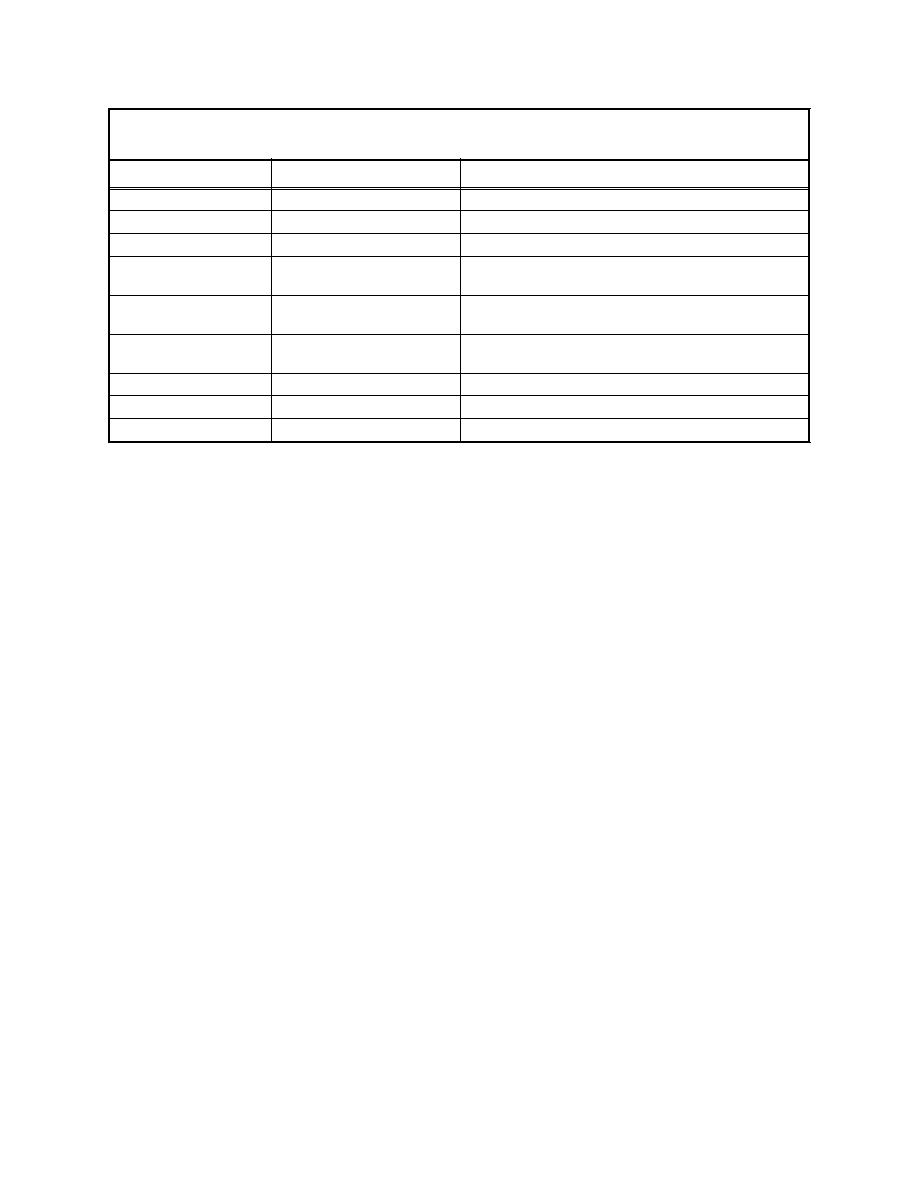 |
||
|
|
||
|
Page Title:
TAble 1. Members of the Phytoreclamation Working Group |
||
| |||||||||||||||
|
|
 Technical Note DOER-C9
November 1999
Table 1
Members of the Phytoreclamation Working Group
Name
Title
Affiliation
Mr. Richard A. Price
Research Agronomist
WES, Vicksburg, MS
Dr. Charles R. Lee
Soil Scientist
WES, Vicksburg, MS
Dr. John W. Simmers
Research Biologist
WES, Vicksburg, MS
Mr. Antonio J. Palazzo
Research Agronomist
ERDC, Cold Regions Research and Engineering
Laboratory (CRREL), Hanover, NH
Dr. Rufus Chaney
Research Agronomist
U.S. Department of Agriculture-Agricultural Research
Service, Beltsville, MD
Dr. Steve Rock
Environmental Engineer
U.S. Environmental Protection Agency (EPA),
Cincinnati, OH
Dr. Robert J. Fellows
Senior Research Scientist
Battelle Northwest
Dr. Paul Schwab
Professor of Soil Chemistry
Purdue University
Dr. Charles Reynolds
Research Physical Scientist
CRREL, Hanover, NH
in dredged material and develop guidelines on the application of phytoreclamation to dredged
material, providing environmentally effective alternatives to dredged material management.
OVERVIEW OF DREDGED MATERIAL AND CONFINED PLACEMENT: The majority of
phytoreclamation research and demonstration efforts have occurred on industrial, Department of
Defense (DoD), and Department of Energy (DOE) sites. Although the working group participants
were very familiar with the application of phytoreclamation in these areas, some had not been
exposed to CDFs and the complexities of dredged material. WES personnel presented a brief
overview describing the dredging process, CDF design, and contaminated dredged material man-
agement. Chemical concentrations of dredged materials studied previously were described includ-
ing those from Indiana Harbor, Blackrock Harbor, and New Bedford Harbor. These dredged
materials were representative of the higher concentrations of contaminants in dredged material
considered for upland placement. A data summary of these materials is provided in Table 2. In
addition, proposed application of phytoreclamation to Pearl Harbor dredged material was described.
The application of phytoreclamation to dredged material presents some challenges that are unique
to dredged material. Dredged material comes from an aquatic environment and is initially wet and
anaerobic after placement in a CDF. Subsequent drying and oxidation depend on dewatering and
management techniques, which vary from site to site. Drying and oxidation of surface layers may
result in physicochemical changes that may affect plant establishment and contaminant mobility.
Although the surface layer of dredged material in a CDF may be dry and aerobic, deeper layers may
remain anaerobic due to the physical design of CDFs and limited air penetration of the surface layers.
Saltwater dredged material provides another level of difficulty for vegetation and in most cases must
be leached to reduce soluble salts. Depth of dredged material in a CDF may be only a few feet to
as much as 27 m (90 ft). Dredged material management is further complicated by the potential of
elevated concentrations of multiple contaminants. The selection of plant species and methods of
establishment will be determined by these factors.
2
|
|
Privacy Statement - Press Release - Copyright Information. - Contact Us - Support Integrated Publishing |